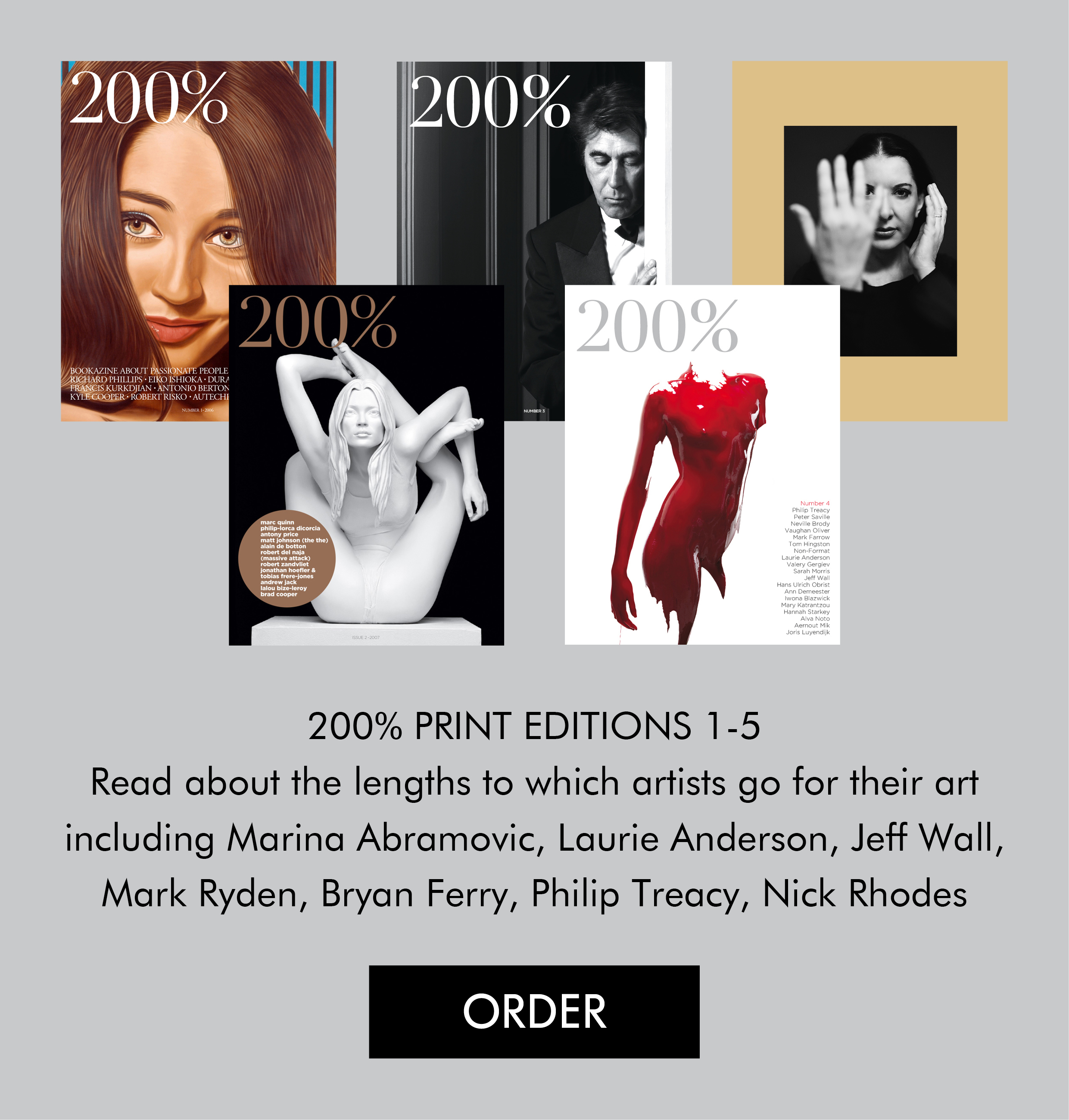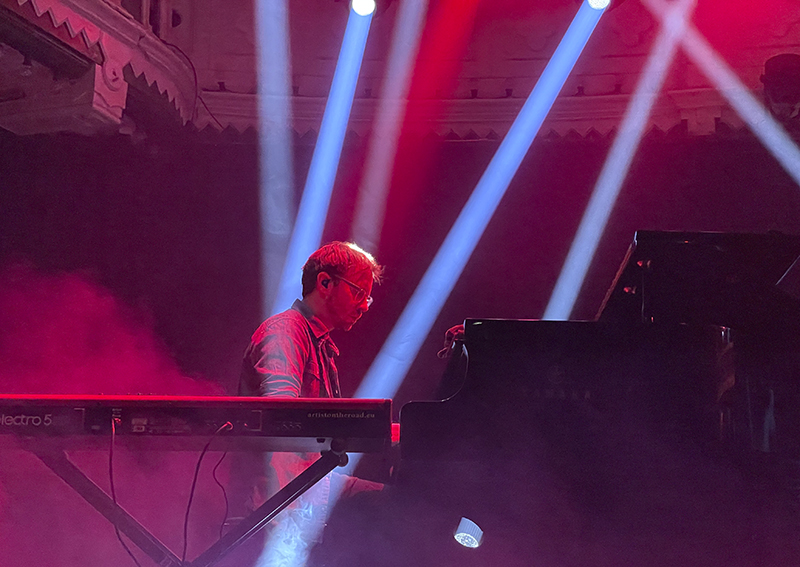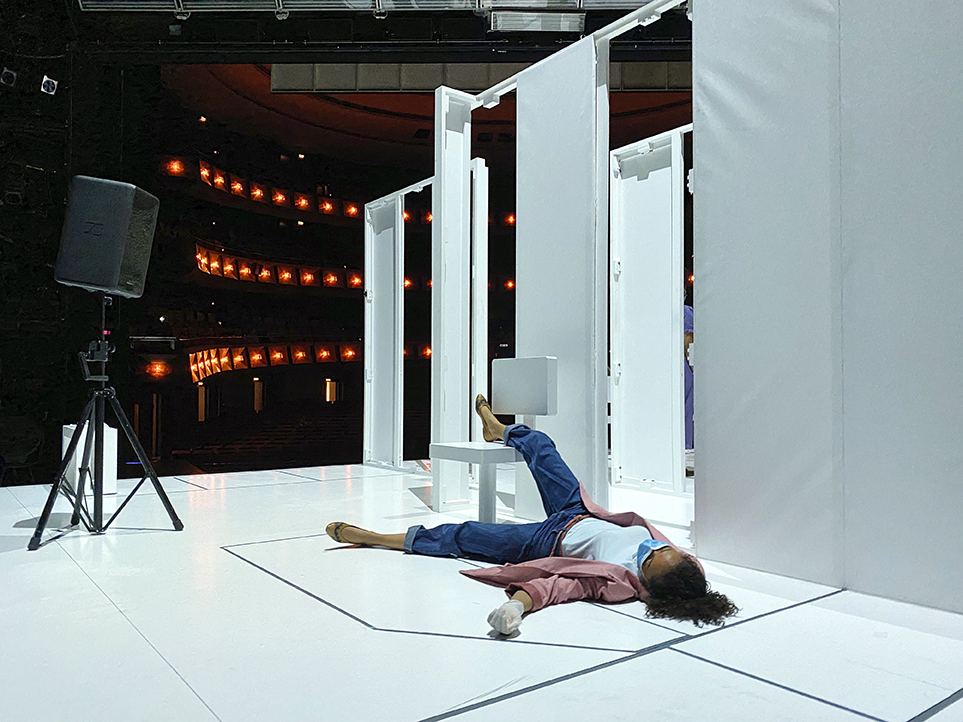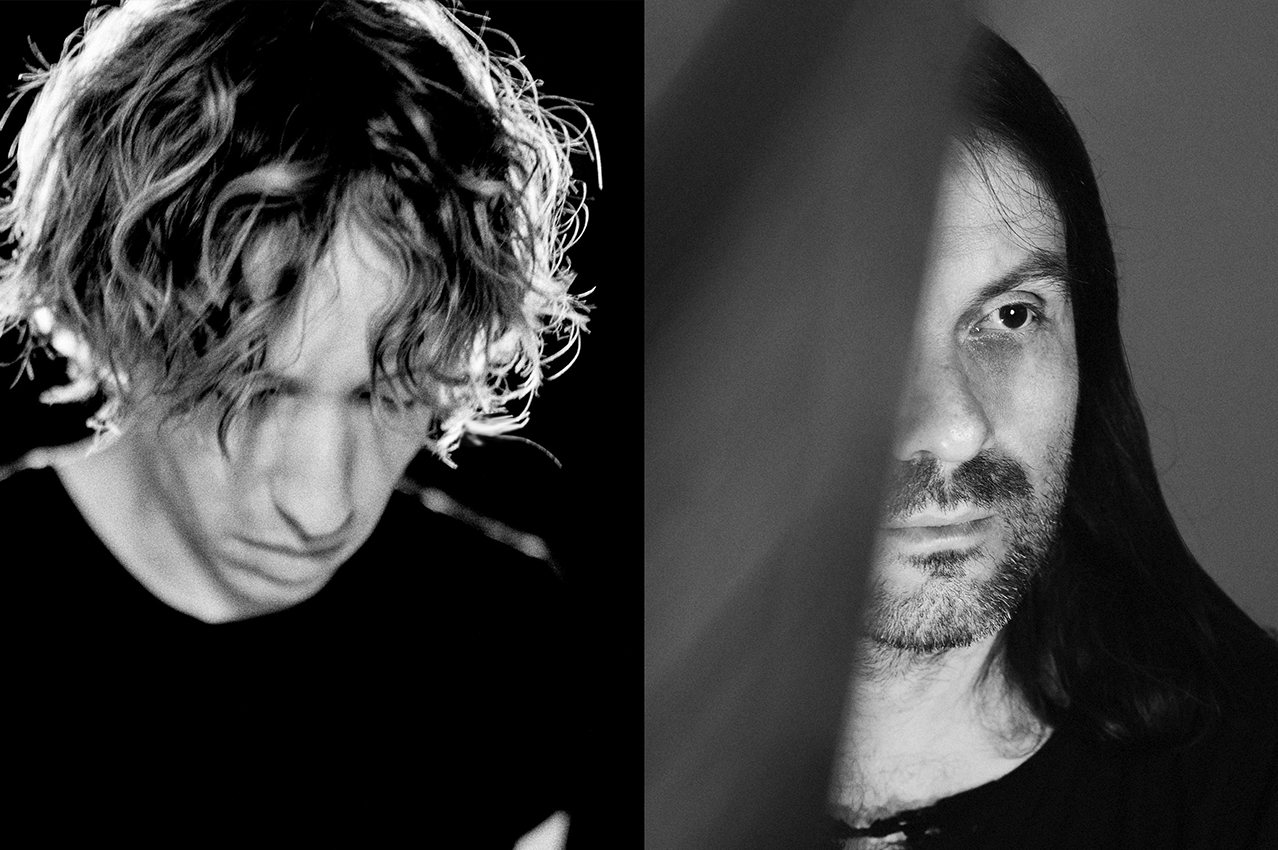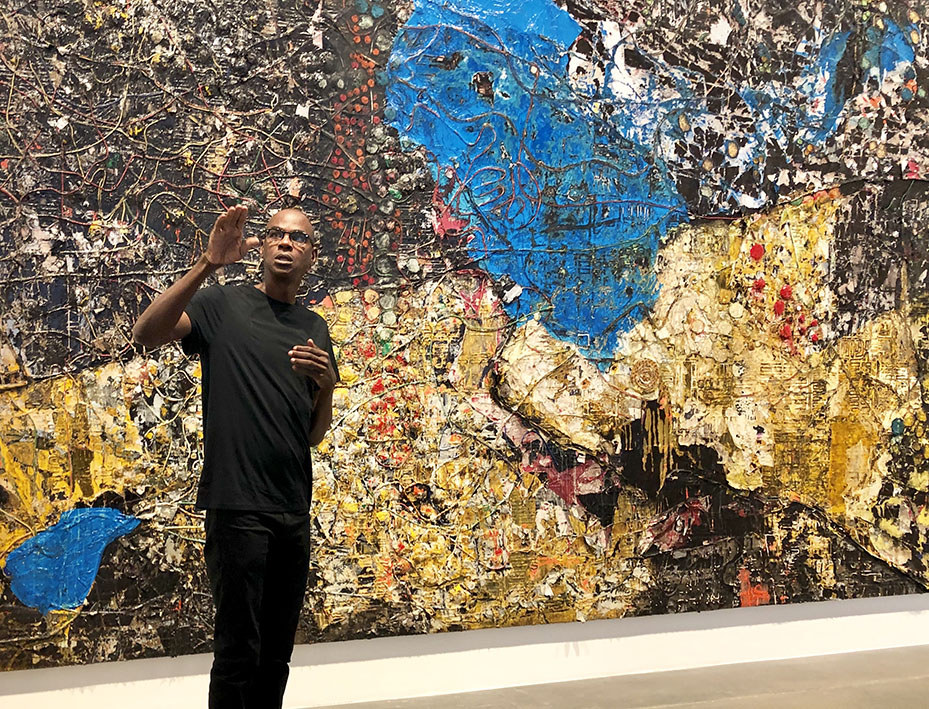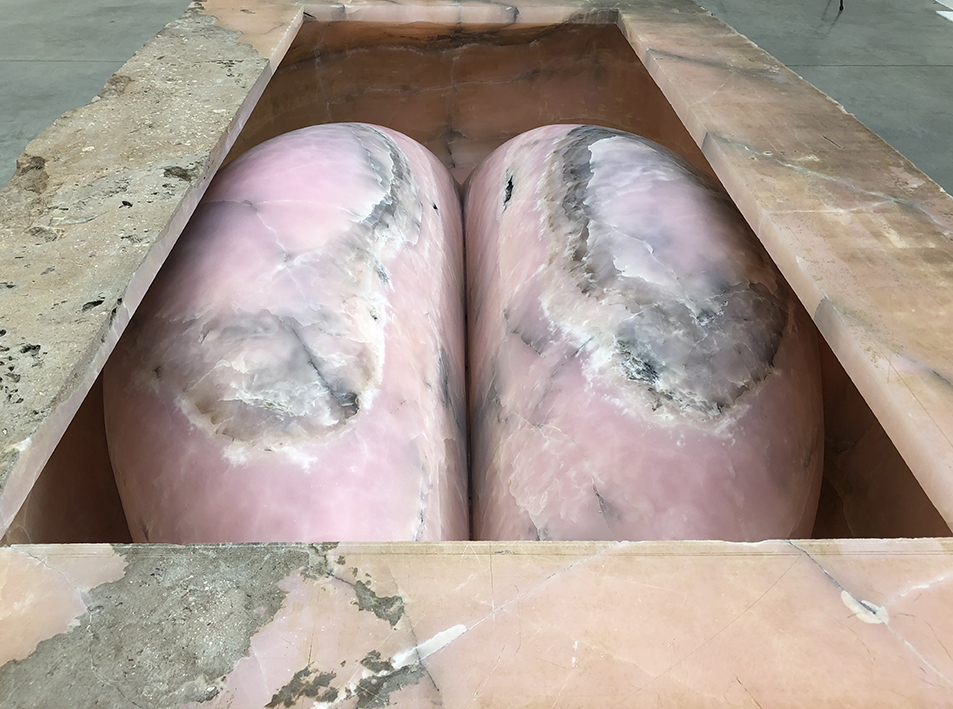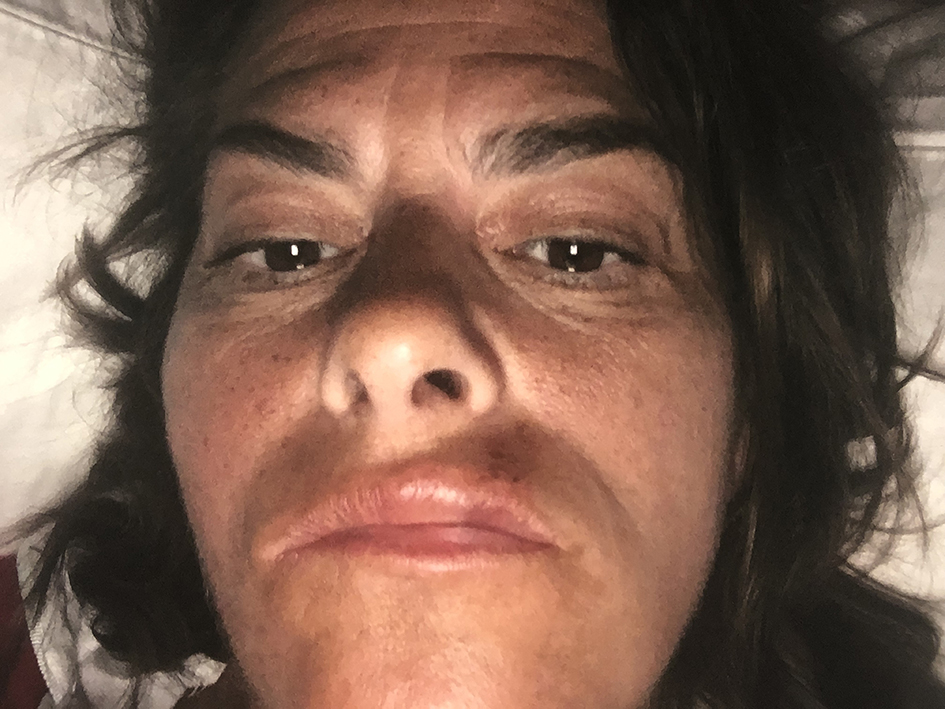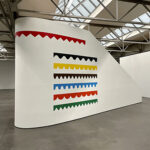 “I think my idols tell the audience more about me than my family could as I have chosen them and, of course, you don’t choose your family”, comments Gillian Wearing when we discuss her self portraits wearing masks of her family members and photographic idols.
The photographers Claude Cahun and August Sander are welcomed as the two new members of whom Wearing considers to be her ‘spiritual’ family. Her self portrait of them are exhibited for the first time in Wearing’s current Whitechapel Gallery exhibition, which covers twenty years of her work.
Wearing spoke with 200% about her new work, how she builds up that level of trust in which people disclose their private thoughts, how the self-portraits as her family members helped her in discovering her own identity, and whether she considers her work to be in the same vein as that of Cindy Sherman?
200%: How were you informed that the Whitechapel Gallery were interested to do a major survey on your work? Did you receive a call from Iwona Blazwick saying: “Gillian, isn’t it time to do a major survey of your work?”
Gillian Wearing: The idea of a show at the Whitechapel was muted in 2006 with Iwona, just after Doris Krystof from K20 Museum in Düsseldorf had also invited me to do a survey show. Both these venues were about to undergo refurbishment which meant that a date couldn’t be fixed: therefore the dialogue would be ongoing. We then decided that it would be beneficial if the galleries could work in collaboration to make it a touring show that also included Pinakothek in Munich, curated by Bernhardt Schwenk, with Daniel Herrmann curating the Whitechapel part.
200%: In your work people disclose their private thoughts. How do you build up that level of trust so that people open up to you?
GW: Depends on the work: in ‘Signs’ I didn’t do or say anything significant – I just asked people to write anything they wanted on a piece of paper. In my view, as the idea captured everyone’s imagination so well they responded in a very open way.
With my ‘confessional’ works, an advert is placed in such a manner that only those who are interested in confessing will reply. I would not want to encourage anyone who doesn’t want to partake hence I use adverts as much as possible.
200%: When you approached people to write down their innermost thoughts on a piece of paper did you have a sense of what they would write down, or was it each time, a total surprise for you?
GW: Absolutely a surprise. The process was all about the instant: the instant thought, the image being taken as a snapshot. In most cases I only took one photograph of each person; in some rare cases two. My photography, therefore, was done as quickly as the sign was written. This meant that, sometimes, I had forgotten what images I had captured until I had them processed. I also stopped anyone that passed me, meaning that I would never select someone whom I thought might be interesting as appearances can never tell you that.
200%: Is the documentary form a means to ensure that these disclosures don’t tip over into voyeurism, but remains honest, with integrity?
GW: I use masks in a lot of my work to protect the identity of the person confessing, as well as empower them to be able to speak without judgement. I also don’t judge myself, or have a voice-over to tell people what to think, which I believe, brings greater understanding for the audience, in listening and empathizing. Anyone of us could be in a mask with a story to tell.
200%: You work in the mode of documentary and have produced snapshot style of pictures for the ‘Signs’ series and beautiful pictures of you as your photographic idols. How important are aesthetics in your work?
GW: When I first started working in the medium of photography and film I used to have an anti-aesthetic aesthetic. I didn’t want my work to feel like it was formally posed or lit, which is why I favoured the snapshot and naturally lighting. Now, though, I work out what is needed for each image, whether it is a snapshot look, or something highly lit.
200%: Are your aesthetics in your work narrative driven – what the idea needs?
GW: Some of my work is and others aren’t. I start by having a notion, an idea.
“I think my idols tell the audience more about me than my family could as I have chosen them and, of course, you don’t choose your family”, comments Gillian Wearing when we discuss her self portraits wearing masks of her family members and photographic idols.
The photographers Claude Cahun and August Sander are welcomed as the two new members of whom Wearing considers to be her ‘spiritual’ family. Her self portrait of them are exhibited for the first time in Wearing’s current Whitechapel Gallery exhibition, which covers twenty years of her work.
Wearing spoke with 200% about her new work, how she builds up that level of trust in which people disclose their private thoughts, how the self-portraits as her family members helped her in discovering her own identity, and whether she considers her work to be in the same vein as that of Cindy Sherman?
200%: How were you informed that the Whitechapel Gallery were interested to do a major survey on your work? Did you receive a call from Iwona Blazwick saying: “Gillian, isn’t it time to do a major survey of your work?”
Gillian Wearing: The idea of a show at the Whitechapel was muted in 2006 with Iwona, just after Doris Krystof from K20 Museum in Düsseldorf had also invited me to do a survey show. Both these venues were about to undergo refurbishment which meant that a date couldn’t be fixed: therefore the dialogue would be ongoing. We then decided that it would be beneficial if the galleries could work in collaboration to make it a touring show that also included Pinakothek in Munich, curated by Bernhardt Schwenk, with Daniel Herrmann curating the Whitechapel part.
200%: In your work people disclose their private thoughts. How do you build up that level of trust so that people open up to you?
GW: Depends on the work: in ‘Signs’ I didn’t do or say anything significant – I just asked people to write anything they wanted on a piece of paper. In my view, as the idea captured everyone’s imagination so well they responded in a very open way.
With my ‘confessional’ works, an advert is placed in such a manner that only those who are interested in confessing will reply. I would not want to encourage anyone who doesn’t want to partake hence I use adverts as much as possible.
200%: When you approached people to write down their innermost thoughts on a piece of paper did you have a sense of what they would write down, or was it each time, a total surprise for you?
GW: Absolutely a surprise. The process was all about the instant: the instant thought, the image being taken as a snapshot. In most cases I only took one photograph of each person; in some rare cases two. My photography, therefore, was done as quickly as the sign was written. This meant that, sometimes, I had forgotten what images I had captured until I had them processed. I also stopped anyone that passed me, meaning that I would never select someone whom I thought might be interesting as appearances can never tell you that.
200%: Is the documentary form a means to ensure that these disclosures don’t tip over into voyeurism, but remains honest, with integrity?
GW: I use masks in a lot of my work to protect the identity of the person confessing, as well as empower them to be able to speak without judgement. I also don’t judge myself, or have a voice-over to tell people what to think, which I believe, brings greater understanding for the audience, in listening and empathizing. Anyone of us could be in a mask with a story to tell.
200%: You work in the mode of documentary and have produced snapshot style of pictures for the ‘Signs’ series and beautiful pictures of you as your photographic idols. How important are aesthetics in your work?
GW: When I first started working in the medium of photography and film I used to have an anti-aesthetic aesthetic. I didn’t want my work to feel like it was formally posed or lit, which is why I favoured the snapshot and naturally lighting. Now, though, I work out what is needed for each image, whether it is a snapshot look, or something highly lit.
200%: Are your aesthetics in your work narrative driven – what the idea needs?
GW: Some of my work is and others aren’t. I start by having a notion, an idea.
 200%: How did the self-portraits as your family members help you in discovering aspects of your own identity?
GW: Wearing masks of my family revealed many different facets for me: the first was to see everyone as an individual – when we are a group, and grow up in a family unit, everyone is assigned their roles and we find it difficult to see outside of this, particularly for a child with respect to their parents. Until I did a self portrait as my mother, Jean Gregory, I was not interested in her previous life as a single, young woman who had her own dreams, disappointments, struggles and triumphs. It made me realise that her identity should be respected without my expectations of what I felt she should be. When I wore the mask I started to see her as someone that was sweet, naïve, a little vulnerable, in comparison to the image that was the source for my own younger self, entitled ‘Self portrait at 17 Years Old’ – I felt it was more knowing, a bit tougher, vain even. Thus, I began to sense who everyone was, including myself, from the past. They say when you are in a close relationship the elastic band snaps and you can’t really see anymore, this project helped me see. I also tried to portray everyone at approximately the same age, which was late teens / early twenties, to have everyone on a level playing field. The exception was my grandparents as I didn’t have any images of them at that age, and so they became the matriarch and patriarch.
200%: What’s the difference between wearing masks of people you know personally, your family members, and people you don’t know personally, your photographic idols or spiritual family? Is it easier or more difficult?
GW: In terms of my spiritual family I worked in a similar manner, sensing who I felt each person was and what they felt in being portrayed or portraying themselves.
I have always felt incredibly close to Diane Arbus having studied her work, read about her personal as well as professional life. Also, when I sometimes see a portrait of her I see me. It’s as if I have observed her so closely I eventually see my own reflection. I think my idols tell the audience more about me than my family as I have chosen them and, of course, you don’t choose your family. Thus, these artists are my created spiritual family.
200%: Why is Claude Cahun one of your idols?
GW: She was radically ahead of her time in terms of masquerading as different characters for self portraits. I think dressing up and masking are an innate part of the female character and Cahun tapped into this beautifully.
200%: In ‘Me as Cahun’ you’re holding a mask of your own face in your right hand. What is the idea behind that?
GW: Cahun incorporated masks and props into her work. I didn’t want to slavishly copy one of her images – I wanted to make something that felt like Cahun, but through my eyes. As an artist, I want to work out my subjective response to Cahun, how to incorporate my sense of myself and her. The final photograph resembles that of a Cahun [picture] but she didn’t take one like that, and you wouldn’t have imagined her holding a mask of another artist or flirting with that idea of past and present that my own face brings to the image, which is one of the themes that is central to my work.
200%: Is there an idea behind the self portraits of your family members and photographic idols series being contained within coloured frames?
GW: When families display photographs of each other on the wall or the sideboard, the frames are always very varied, as well as the colour, so I wanted to hint at that aspect. By choosing the different colours, hanging them all at different heights on the wall, and making them different sizes provides a stronger sense of them all being taken at different times in history.
200%: Daniel Herrmann commented in our interview with him on your show, “One of the most striking aspects of working with Gillian is how curious she is about other people’s opinions and hearing your interpretation of her work”. What makes you so curious to hear other people’s opinions about your work?
GW: When I work with people who understand my work and whose opinion I respect it is really interesting to hear their articulation of my work and in turn makes me look at elements within my films or photographs of which I have not previously been aware.
200%: At this moment Cindy Sherman, whose work also deals with identity and representation, for which she photographs herself in different disguises creating different personas, is having a retrospective at the MoMA. Do you consider your work to be in the same vein as that of Sherman?
GW: Our concerns are very different. I think Sherman is a brilliant artist and has really explored in amazing bodies of work, the multi faceted way women are mediated and mediate themselves. Like Cahun, she tapped into a rich vein that was waiting to be explored, and is incredibly relatable. My work deals much more with the people’s interior worlds. When I adopt a disguise myself it is of people that have existed or are alive now, it is less about gender and more about the many selves we all have.
Interview conducted by Thierry Somers
Gillian Wearing, Me as Cahun Holding a Mask of My Face, 2012 Framed bromide print 149 x 120.5 cm © the artist, Courtesy Maureen Paley, London; Gillian Wearing, Self Portrait at 17 Years Old, 2003 Framed c-type print 115.5 x 92 cm © the artist, Courtesy Maureen Paley, London
Gillian Wearing, Whitechapel Gallery, 28 March – 17 June 2012
200%: How did the self-portraits as your family members help you in discovering aspects of your own identity?
GW: Wearing masks of my family revealed many different facets for me: the first was to see everyone as an individual – when we are a group, and grow up in a family unit, everyone is assigned their roles and we find it difficult to see outside of this, particularly for a child with respect to their parents. Until I did a self portrait as my mother, Jean Gregory, I was not interested in her previous life as a single, young woman who had her own dreams, disappointments, struggles and triumphs. It made me realise that her identity should be respected without my expectations of what I felt she should be. When I wore the mask I started to see her as someone that was sweet, naïve, a little vulnerable, in comparison to the image that was the source for my own younger self, entitled ‘Self portrait at 17 Years Old’ – I felt it was more knowing, a bit tougher, vain even. Thus, I began to sense who everyone was, including myself, from the past. They say when you are in a close relationship the elastic band snaps and you can’t really see anymore, this project helped me see. I also tried to portray everyone at approximately the same age, which was late teens / early twenties, to have everyone on a level playing field. The exception was my grandparents as I didn’t have any images of them at that age, and so they became the matriarch and patriarch.
200%: What’s the difference between wearing masks of people you know personally, your family members, and people you don’t know personally, your photographic idols or spiritual family? Is it easier or more difficult?
GW: In terms of my spiritual family I worked in a similar manner, sensing who I felt each person was and what they felt in being portrayed or portraying themselves.
I have always felt incredibly close to Diane Arbus having studied her work, read about her personal as well as professional life. Also, when I sometimes see a portrait of her I see me. It’s as if I have observed her so closely I eventually see my own reflection. I think my idols tell the audience more about me than my family as I have chosen them and, of course, you don’t choose your family. Thus, these artists are my created spiritual family.
200%: Why is Claude Cahun one of your idols?
GW: She was radically ahead of her time in terms of masquerading as different characters for self portraits. I think dressing up and masking are an innate part of the female character and Cahun tapped into this beautifully.
200%: In ‘Me as Cahun’ you’re holding a mask of your own face in your right hand. What is the idea behind that?
GW: Cahun incorporated masks and props into her work. I didn’t want to slavishly copy one of her images – I wanted to make something that felt like Cahun, but through my eyes. As an artist, I want to work out my subjective response to Cahun, how to incorporate my sense of myself and her. The final photograph resembles that of a Cahun [picture] but she didn’t take one like that, and you wouldn’t have imagined her holding a mask of another artist or flirting with that idea of past and present that my own face brings to the image, which is one of the themes that is central to my work.
200%: Is there an idea behind the self portraits of your family members and photographic idols series being contained within coloured frames?
GW: When families display photographs of each other on the wall or the sideboard, the frames are always very varied, as well as the colour, so I wanted to hint at that aspect. By choosing the different colours, hanging them all at different heights on the wall, and making them different sizes provides a stronger sense of them all being taken at different times in history.
200%: Daniel Herrmann commented in our interview with him on your show, “One of the most striking aspects of working with Gillian is how curious she is about other people’s opinions and hearing your interpretation of her work”. What makes you so curious to hear other people’s opinions about your work?
GW: When I work with people who understand my work and whose opinion I respect it is really interesting to hear their articulation of my work and in turn makes me look at elements within my films or photographs of which I have not previously been aware.
200%: At this moment Cindy Sherman, whose work also deals with identity and representation, for which she photographs herself in different disguises creating different personas, is having a retrospective at the MoMA. Do you consider your work to be in the same vein as that of Sherman?
GW: Our concerns are very different. I think Sherman is a brilliant artist and has really explored in amazing bodies of work, the multi faceted way women are mediated and mediate themselves. Like Cahun, she tapped into a rich vein that was waiting to be explored, and is incredibly relatable. My work deals much more with the people’s interior worlds. When I adopt a disguise myself it is of people that have existed or are alive now, it is less about gender and more about the many selves we all have.
Interview conducted by Thierry Somers
Gillian Wearing, Me as Cahun Holding a Mask of My Face, 2012 Framed bromide print 149 x 120.5 cm © the artist, Courtesy Maureen Paley, London; Gillian Wearing, Self Portrait at 17 Years Old, 2003 Framed c-type print 115.5 x 92 cm © the artist, Courtesy Maureen Paley, London
Gillian Wearing, Whitechapel Gallery, 28 March – 17 June 2012

